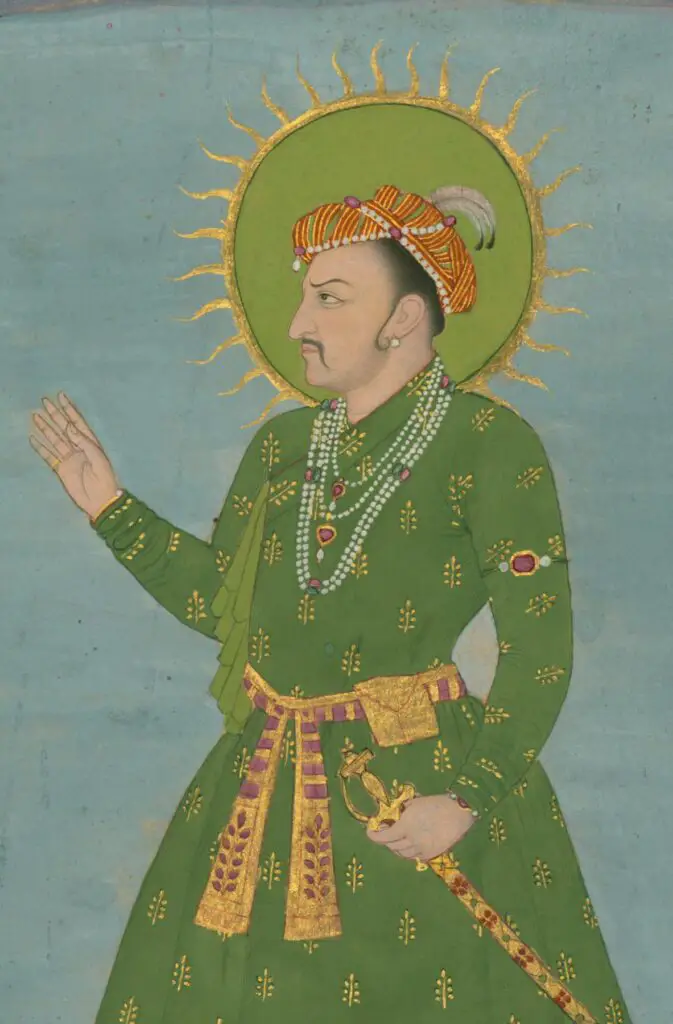Introduction
Jahangir, Also known as Nur-ud-din Muhammad Salim, was an important figure in the time of the Mughal Empire. The fourth emperor, Jahangir’s reign, had an impact that lasted for a long time on the cultural, political, and aesthetic landscape. This article explores the Jahangir History. It explores his early life, rule style, military campaigns, love for art, relationships with his family, and lasting legacy.
Early Life and Family Background
Jahangir was born on August 31, 1569. Jahangir was born on August 31, 1569, in Fatehpur Sikri, India. Jahangir was Emperor Akbar The Great’s oldest son and the emperor’s Rajput spouse, Mariam-uz-Zamani. Since his early years, Jahangir has had a passion for military and arts strategy. He was educated extensively across a range of disciplines.
Ascension to the Throne

In 1605 following dying his father, Jahangir was elevated to the Mughal throne at 36 years old. His reign was a time of stability and consolidation following the policies of expansionists like his father. Jahangir’s coronation signified the continued development of the Mughal legacy. Jahangir was named “Jahangir,” meaning “conqueror of the world.”
Ruling Style and Policies
Jahangir’s rule style was marked by a more relaxed and inclusive manner of life compared to his predecessors. Jahangir enacted a policy of religious tolerance that granted autonomy to various communities and earned respect from his subjects. Jahangir also emphasized administrative reforms, bolstering the Empire’s bureaucracy andEmpireing justice was provided to everyone.
Art and Culture During Jahangir’s Reign
Jahangir was an ardent patron of the arts and was integral in promoting the Mughal art school. His court became a place for famous poets, artists, and musicians, creating a distinct Mughal aesthetic. The intricate miniatures and exquisite detail in Mughal paintings of this time remain awe-inspiring.
Relations with the Mughal Nobility
Jahangir cultivated a desirable balance of power and his Mughal nobility in a way that rewarded loyalty while retaining control over the massive Empire. DespiEmpireasional revolts and challenges, Jahangir was adept at navigating the complexities of court politics, creating alliances, and stabilizing his reign.
Military Campaigns and Expansion
While Jahangir primarily focused on matters of internal affairs, he was involved with military operations to increase the Mughal Empire’s territory. Jahangir was able to suppress revolts, establish Mughal control over the regions, and accelerate his father’s victories. Jahangir’s military victories helped ensure the dominance of the Empire in SouEmpirea.
Jahangir’s Religious Policies
Emotional support for the freedom of religion and pluralism characterized Jahangir’s policies on religion. He ended the Jizya tax for non-Muslims and issued strict orders against destroying sacred sites. His broad-based approach to religion earned him admiration and respect from various religious communities.
Personal Life and Love for Nature
Jahangir was deeply enthralled by nature. He spent significant time exploring the beauty of nature in his vast Empire. He waEmpireen hunter and frequently embarked on hunting expeditions across different areas, immersing himself in the breathtaking landscapes. Jahangir’s love for nature is apparent throughout his book, Tuzk-eJahangiri, where he vividly describes experiences with wild animals and the peaceful beauty surrounding him.
Connection with Nur Jahan
The most critical aspect of Jahangir’s relationship was his relationship with Nur Jahan. She was his adored wife and a prominent person within his court. Nur Jahan’s intellect, administrative skills, and artistic sensibilities significantly influenced Jahangir’s decisions. She became a recognizable persona and was featured on coins, demonstrating her extraordinary authority and influence.
Later Years and Succession
As Jahangir aged, his health began to decline, and his dependence on opium was a source of worry. But, despite his poor health condition, Jahangir remained to manage the Empire’s affairs up to Empiremise in 1627. The next in line was his son Shah Jahan, who went on to construct the magnificent Taj Mahal.
Legacy of Jahangir
Jahangir’s rule left a lasting legacy for his legacy to the Mughal Empire. His policies of tolerance to religion, administrative reforms, and the advancement of the arts and culture set the groundwork for the Empire’s goldEmpire’suring the reign of Shah Jahan. Jahangir’s support for literature and arts raised the Mughal art form to new heights while leaving the legacy of a rich artistic tradition that continues to be awe-inspiring to the world.
Conclusion
Jahangir’s reign as Mughal Emperor was distinguished by his unique mix of tolerance, patronage for artists, and administrative reforms. His devotion to nature, freedom of religion, and wise political strategy helped ensure the Empire’s security and growth. In thEmpireent, Jahangir is remembered as an exemplary ruler who left an irresistible impression on the culture and history of India.
FAQs (Frequently Asked Questions)
1. Was Jahangir’s reign a peaceful one?
Jahangir’s reign was relatively peaceful, focusing on consolidating the Empire and maintaining stability—however, some occasional revolts and conflicts needed to be quelled.
2. How did Jahangir contribute to the development of Mughal art?
Jahangir’s patronage of art and culture significantly contributed to the development of Mughal art. He encouraged artists, poets, and musicians to create exquisite paintings, poetry, and music that showcased the unique Mughal artistic style.
3. Who was Nur Jahan, and what was her influence on Jahangir’s rule?
Nur Jahan was Jahangir’s wife and an influential figure in his court. Her intelligence, administrative skills, and artistic sensibilities greatly influenced Jahangir’s decision-making and policies. She played a significant role in the affairs of the Empire during Jahangir’s reign.
4. What is Jahangir’s memoir, Tuzk-e-Jahangiri, known for?
Jahangir’s memoir, Tuzk-e-Jahangiri, is renowned for its detailed accounts of his life, including his experiences, encounters with wildlife, and reflections on nature. It provides valuable insights into the Mughal Empire during his reign.
5. What is Jahangir’s lasting legacy on the Mughal Empire?
Jahangir’s legacy includes his policies of religious tolerance, administrative reforms, and promotion of the arts and culture. His reign set the stage for the Empire’s cultural flourishing under Shah Jahan and left an indelible mark on the history and heritage of the Mughal Empire.
Taj Mahal History: A Timeless Testament of Love and Beauty


[…] Jahangir History – The Mughal Emperor […]